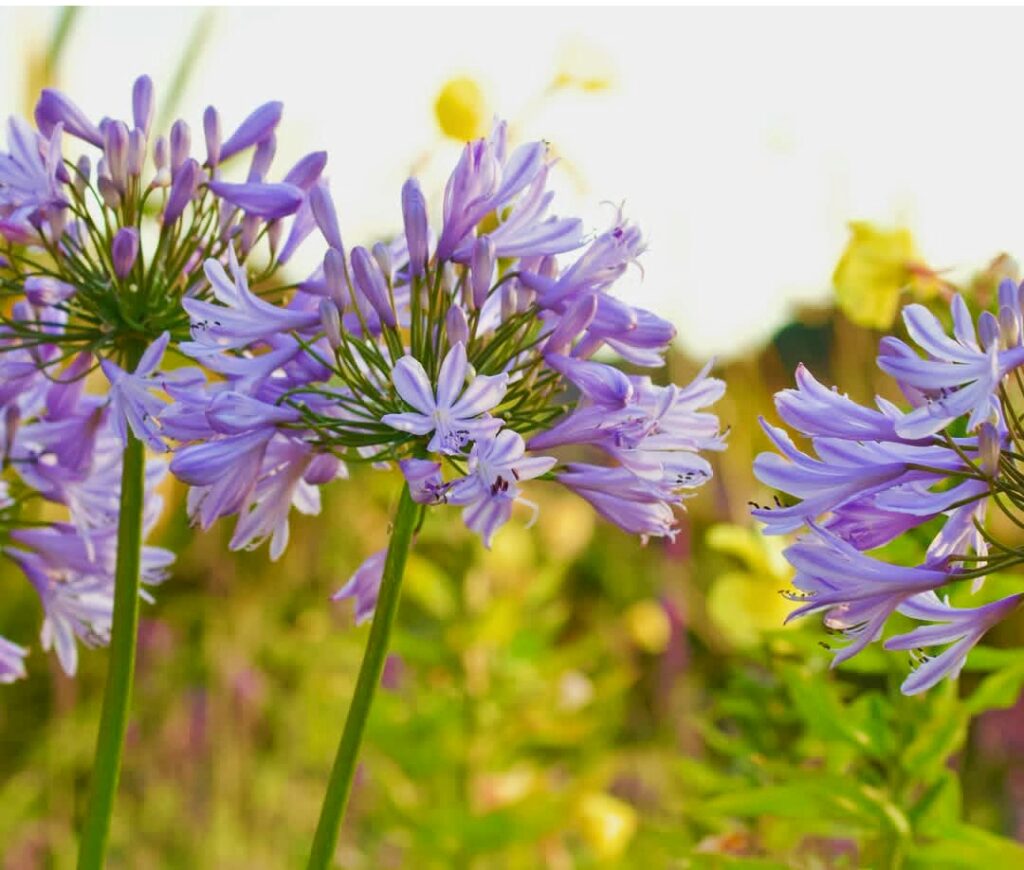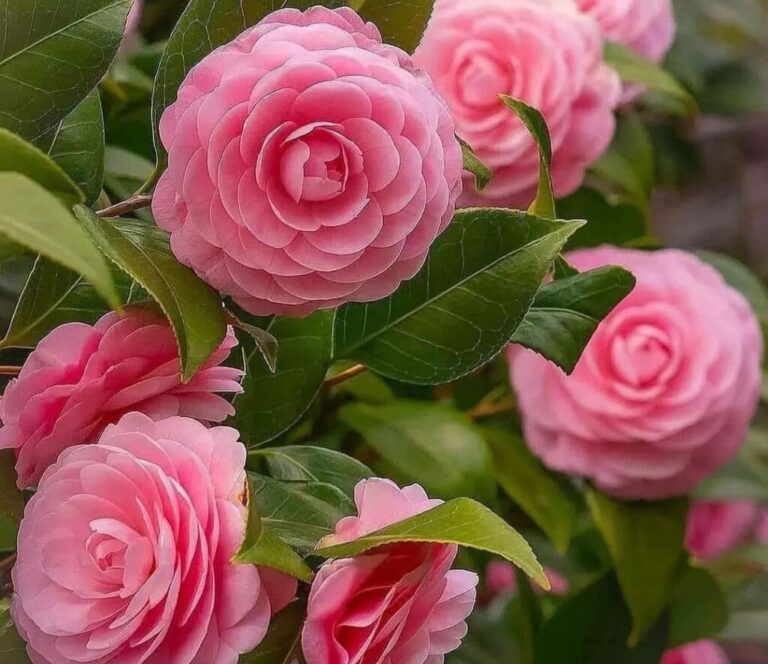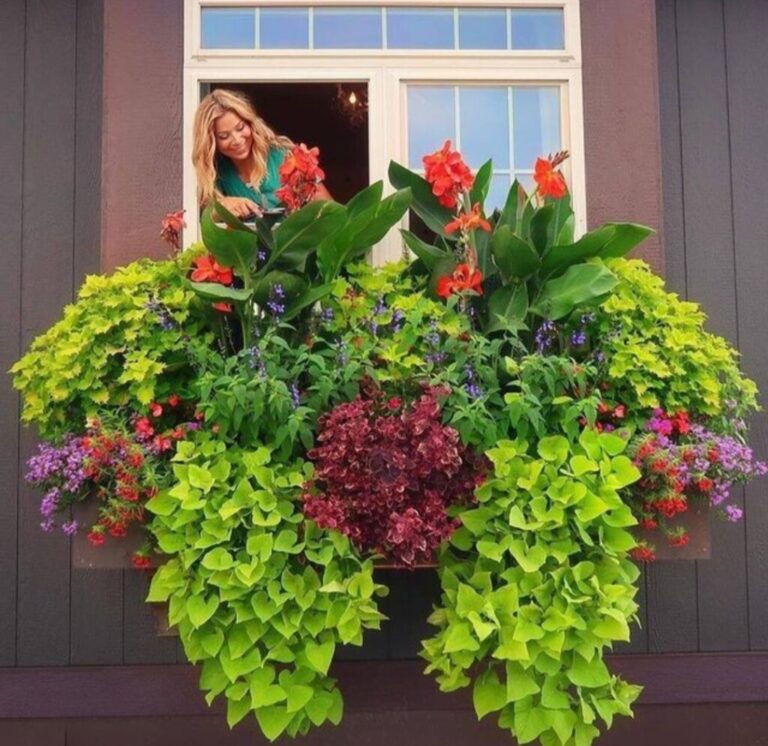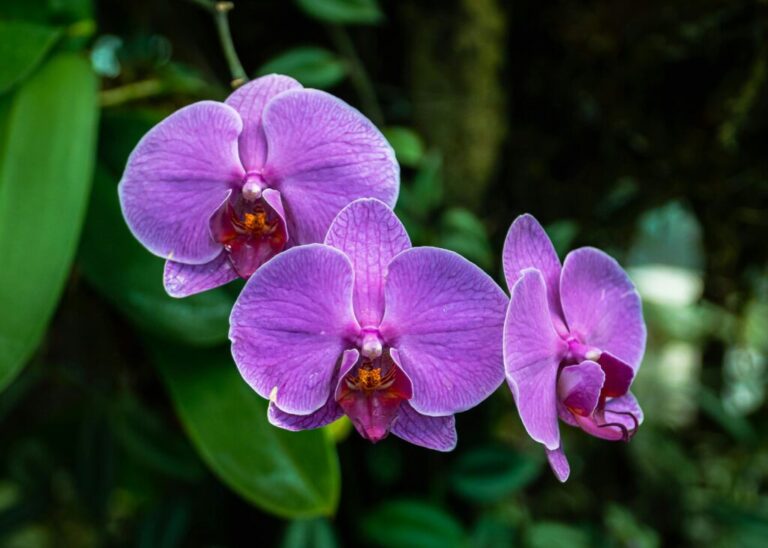- 1 1. Provide Bright, Indirect Sunlight
- 2 2. Choose the Right Pot and Soil Mix
- 3 3. Watering: Less is More
- 4 4. Maintain Ideal Temperature and Humidity
- 5 5. Fertilize for Strong Growth and Blooming
- 6 6. Proper Repotting Techniques
- 7 7. Prune and Deadhead Regularly
- 8 8. Manage Common Pests and Diseases
- 9 9. Encourage Blooming Indoors
- 10 10. Winter Care Tips
- 11 FAQs on African Lily (Agapanthus)
The African Lily (Agapanthus) is a stunning, exotic-looking plant that adds elegance and charm to indoor spaces. With its striking blue or white trumpet-shaped flowers and lush green foliage, it is a favorite among plant enthusiasts. However, growing an African Lily indoors requires special care to ensure healthy growth and blooming. If you’re looking for expert guidance on how to keep your African Lily thriving, you’re in the right place.
This guide covers the 10 best must-know tips for successfully growing and caring for an African Lily indoors. From the right soil mix to repotting and winter care, every aspect is covered in detail to help your plant flourish.

African Lily
| Common Name | Agapanthus, African Lily, and Lily of the Nile |
|---|---|
| Scientific Name | Agapanthus spp. |
| Plant Type | Perennial |
| Flower Color | Blue, White, Purple |
| Light Requirement | Bright, indirect sunlight |
| Watering Needs | Moderate; allow soil to dry between watering |
| Temperature | 60–75°F (15–24°C) |
| Humidity | Moderate to high |
| Soil Type | Well-draining, nutrient-rich potting mix |
| Fertilization | Balanced liquid fertilizer every 2-3 weeks |
| Blooming Season | Summer to early fall |
1. Provide Bright, Indirect Sunlight
African Lilies thrive in bright light but can struggle under direct sunlight when grown indoors. Ideally, place them near an east- or west-facing window where they receive gentle morning or evening sunlight. If you notice the leaves turning yellow or scorched, it’s a sign that they are receiving too much direct sunlight.
If natural light is insufficient, consider supplementing with grow lights to keep your African Lily happy. LED grow lights with a full spectrum mimic natural sunlight and help in maintaining steady growth, especially during winter months when daylight hours are shorter.
2. Choose the Right Pot and Soil Mix
A well-draining potting mix that retains some moisture but does not become soggy is essential for the health of your African Lily. A mix of compost, perlite, and peat moss is a good combination because it avoids root rot, which is a common problem in indoor environments, and ensures adequate aeration.
Choose a pot with drainage holes to avoid water buildup; terracotta pots are an excellent choice because they let air flow to the roots, preventing them from getting soggy.
3. Watering: Less is More
When it comes to indoor African lily care, one of the most frequent mistakes is overwatering. Rather than soil that is always wet, these plants need slightly dry circumstances. Before watering, make sure to inspect the top 1-2 inches of soil. Watering is necessary if it feels dry.
During the active growing season (spring and summer), African Lilies need moderate watering, about once a week. Water less frequently in the winter, though, when the plant goes into hibernation. Root rot brought on by excessive watering can be lethal to the plant.
4. Maintain Ideal Temperature and Humidity
African Lilies thrive in temperatures between 60–75°F (15–24°C). They do not tolerate extreme cold or heat, so avoid placing them near radiators, air conditioners, or drafty windows.
The ideal humidity range is between mild and high. Put a tray of water-filled pebbles next to the plant or use a humidifier if the air in your house is dry. While sometimes misting the leaves can assist maintain humidity, excessive moisture should be avoided since it might cause fungal illnesses.
5. Fertilize for Strong Growth and Blooming
To encourage lush foliage and vibrant blooms, feed your African Lily with a balanced liquid fertilizer every 2-3 weeks during the growing season. A fertilizer with an equal N-P-K ratio (10-10-10 or 20-20-20) works well.
Once the plant starts forming flower buds, switch to a phosphorus-rich fertilizer to promote blooming. Avoid excessive nitrogen, as it encourages leaf growth at the expense of flowers.
6. Proper Repotting Techniques
African Lilies enjoy being slightly root-bound, so repotting is only necessary every 2-3 years or when the roots start overcrowding the pot.When repotting, use a pot that is one size bigger and change the soil mixture.
Divide the plant carefully if it has outgrown its pot, as African Lilies can be propagated through division. This is an excellent way to get more plants while ensuring the mother plant continues to thrive.
7. Prune and Deadhead Regularly
Pruning plays a vital role in keeping your African Lily healthy. Get rid of any dead or yellowing leaves to promote new growth and enhance airflow.Deadheading spent flowers will also prolong blooming and direct the plant’s energy into producing more flowers rather than seeds.
Use clean, sharp pruning shears to prevent infections and always prune at the base of the stem for best results.
8. Manage Common Pests and Diseases
African Lilies are relatively pest-resistant, but they can sometimes attract aphids, spider mites, and mealybugs. Regularly check the undersides of leaves and treat infestations with neem oil or insecticidal soap.
Fungal diseases such as powdery mildew and root rot can occur due to overwatering or poor air circulation. To prevent this, always water at the base, avoid wetting the leaves, and ensure the plant is placed in a well-ventilated area.
9. Encourage Blooming Indoors
African Lilies can sometimes be stubborn when it comes to blooming indoors. If your plant is not flowering, try the following
Ensure at least 6 hours of bright light daily.
Reduce watering slightly in winter to mimic dormancy.
Use a phosphorus-rich fertilizer to stimulate flower production.
Keep the plant slightly root-bound, as this encourages blooming.
By adjusting these conditions, you can significantly improve the chances of seeing beautiful flowers year after year.
10. Winter Care Tips
During winter, African Lilies enter a dormant phase. Reduce watering to once every 2-3 weeks and stop fertilizing until early spring. If your home is particularly cold, consider moving the plant to a warmer spot to prevent stress.
Avoid repotting in winter, as the plant is not actively growing. Instead, focus on occasional pruning and removing dead foliage to keep it tidy.
Growing an African Lily indoors can be incredibly rewarding when given the right care. With proper lighting, watering, and fertilization, you can enjoy lush green foliage and stunning blooms for years. Whether you’re a beginner or an experienced plant lover, following these 10 expert tips will ensure your African Lily remains healthy and thriving in your home.
FAQs on African Lily (Agapanthus)
What is an African Lily?
The African Lily (Agapanthus) is a herbaceous perennial known for its striking blue or white trumpet-shaped flowers and strappy green leaves.In gardens and pots, it is frequently planted as a decorative plant.
How do you care for an African Lily?
African Lilies thrive in well-draining soil, full sun to partial shade, and require moderate watering. Regular feeding during the growing season and occasional division of clumps help maintain their health and bloom production.
Can African Lilies be grown indoors?
Yes, African Lilies can be grown indoors in containers with good drainage. They need bright, indirect sunlight and consistent watering, but the soil should not remain soggy.
How often should I water my African Lily?
Water regularly during the growing season (spring and summer), ensuring the soil is moist but not waterlogged. In the winter, when the plant is dormant, water it less.
When does the African Lily bloom?
African Lilies typically bloom in late spring to summer, producing tall flower stalks with clusters of blue, violet, or white flowers.
Do African Lilies need full sun?
Yes, African Lilies prefer full sun for optimal blooming, but they can tolerate partial shade. However, too much shade may reduce flower production.
How do you propagate African Lily?
African Lilies can be propagated by dividing mature clumps every 3–4 years in early spring or fall. Seeds can also be used, but they take longer to establish.
Do African Lilies need fertilizer?
Yes, fertilizing with a balanced liquid fertilizer every two weeks during the growing season helps promote healthy growth and abundant blooms.
How do you overwinter African Lilies?
In colder climates, potted African Lilies should be moved indoors or kept in a greenhouse. For in-ground plants, mulch around the base to protect the roots from frost.
Are African Lilies toxic to pets?
Yes, African Lilies contain compounds that can be toxic to pets if ingested, potentially causing vomiting, diarrhea, or other symptoms. Ensure that curious animals cannot reach them
Why is my African Lily not flowering?
Lack of flowers may be due to insufficient sunlight, overcrowding, or lack of nutrients. Ensure proper care, occasional division, and regular feeding to encourage blooming.
Can African Lilies grow in pots?
Yes, they grow well in pots with good drainage. Use a high-quality potting mix and repot every few years to refresh the soil and prevent overcrowding.
How tall do African Lilies grow?
Depending on the variety, African Lilies can grow between 1 to 4 feet tall, with flower stalks reaching even higher.
Are African Lilies drought-tolerant?
Yes, mature African Lilies are relatively drought-tolerant, but they perform best with regular watering during dry spells
Can African Lilies be used as cut flowers?
Yes, African Lily flowers make excellent cut flowers, lasting up to two weeks in a vase with fresh water.







